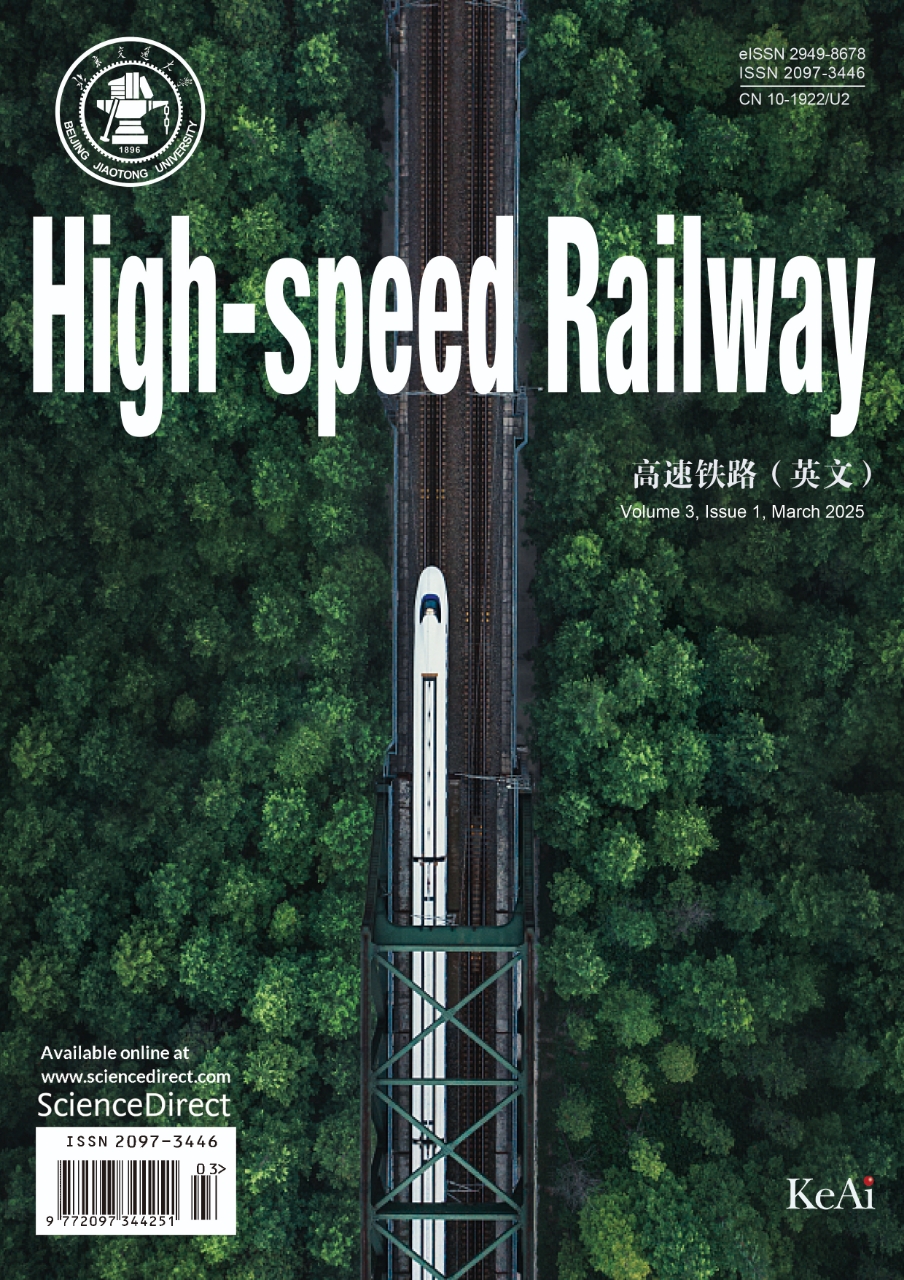
Influence of guidance signs on platform evacuation in suburban railway tunnel under smoke and obstacle environment
Yifan Zhuang, Fan Wang, Yuanchun Huang, Xiaomin Song, Ya Rao
https://doi.org/10.1016/j.hspr.2025.01.002
摘要:Once a train stops in a tunnel section and requires emergency evacuation, the large distance between stations and long walking distances in the underground spaces of suburban railway systems pose potential risks to the evacuation process on tunnel platforms, especially in complex environments. This study utilized Virtual Reality (VR) technology to construct a virtual experimental platform for tunnel evacuation in suburban railway systems, simulating different combinations of smoke and obstacle conditions. By requiring participants to wear VR glasses and walk on an omnidirectional treadmill for moving, as well as complete psychological questionnaires, the study reveals the influences of No Guiding (NG) signs, Wall-Guided (WG) signs, and Central axis Guidance (CG) signs on the movement abilities and psychological behaviors of participants contrastively. The results show that either smoke conditions or obstacle positions affect the mental stress of participants, and the guidance sign has a positive effect on reducing the mental stress. There is an inverse relationship between mental stress and movement abilities. WG and CG signs respectively lead participants to walk closer to walls and along the central axis, which is conducive to reducing the variation in participants’ behavior characteristics when circumventing obstacles on the wall side or track side under smoke conditions, respectively. Additionally, CG signs reduce the speed fluctuations of participants before circumventing obstacles, improving the stability of the distance from the wall and speed under smoke conditions, compared to NG and WG signs. These findings contribute to understanding the evacuation psychological-behavioral-movement characteristics of pedestrians on evacuation platforms in suburban railway tunnels and provide a basis for improving the safety design of evacuation guidance signs.
引用格式:Y.Zhuang , F.Wang, Y.Huang, et al. Influence of guidance signs on platform evacuation in suburban railway tunnel under smoke and obstacle environment[J]. High-speed Railway, 2025, 3(1): 1-16.

下载原文
Study on structure-borne noise characteristics and noise reduction of “integrated station-bridge” high-speed railway station
Bowen Hou, Xinhao Liang, Di Wang
https://doi.org/10.1016/j.hspr.2025.01.001
摘要:Due to its high space utilization efficiency and overall advantages, the "integrated station-bridge" design is widely used in high-speed rail stations. However, compared to traditional separated station-bridge structures, the structure-borne noise generated by high-speed trains passing through these stations is more pronounced. To investigate the structure-borne noise radiation characteristics of these station designs, we developed a noise simulation model for the "integrated station-bridge" high-speed railway station and validated its reliability through comparison with test results. Building on this, we implemented the floating track slab between the track structure and the station platform to mitigate structure-borne noise. Furthermore, we examined the factors influencing the noise reduction effectiveness of the floating floor. The results indicated that train passages result in significant structure-borne noise issues in "integrated station-bridge" stations. The maximum sound pressure levels at the waiting hall and platform exceed 70 dB(A). After the implementation of the floating floor, the maximum sound pressure levels on each floor decreased by 11–14 dB(A). Additionally, increasing the thickness of the floating floor and reducing the stiffness of the steel spring bearings both enhanced the noise reduction effectiveness of the floating floor.
引用格式:B.Hou, X.Liang, D.Wang., Study on Structure-borne Noise Characteristics and Noise Reduction of" Integrated Station-Bridge" High-Speed Railway Station[J]. High-speed Railway, 2025, 3(1): 17-27.

下载原文
Influence of particle size distribution and normal pressure on railway ballast: A DEM approach
Z. Yan, Ali Zaoui, W. Sekkal
https://doi.org/10.1016/j.hspr.2024.12.001
摘要:Developing the railway transport sector is a challenging scientific, economic and social research topic starting with ensuring human security. The main topic that should be developed in that sense is the ballast stability and dynamical behaviour under external loading and environmental changes. This paper investigates the effect of particle size distribution and normal pressure on the mechanical response of a ballast bed. Grading curves of ballast layers with different sizes are illustrated to discuss their strength behaviour under various strains to deduce the significant effect on the direct shear performance of the ballast layer. Direct shear tests with different Particle Size Distribution (PSD) were reproduced using the Discrete Element Method (DEM). It is noticed that when the number of small-sized ballast increases, the shear strength and the friction angle increase to varying degrees under different normal pressures, with an average increase of 27 % and 8 %, respectively. When the number of large-sized ballast decreases, the shear strength and the friction angle decrease to varying degrees under different normal pressures, with an average decrease of 6 % and 3 %, respectively.
引用格式:Z.Yan, A.Zaoui, W.Sekkal. Influence of particle size distribution and normal pressure on railway ballast: A DEM approach[J]. High-speed Railway, 2025, 3(1): 28-36.

下载原文
Anti-spoofing performance analysis of typical GNSS-based railway train positioning schemes
Siqi Wang, Jiang Liu, Baigen Cai, Jian Wang, ... Wei Jiang
https://doi.org/10.1016/j.hspr.2025.01.005
摘要:Global Navigation Satellite Systems (GNSSs) are vulnerable to both unintentional interference and intentional attacks, making it difficult to meet the stringent safety requirements of railway train control systems. The growing threat to information security posed by spoofing attacks has received limited attention. This study investigates the impact of GNSS spoofing attacks on train positioning, emphasizing their detrimental effects on the accuracy and availability of train location report functions for train operation control. To explore the anti-spoofing performance of typical GNSS-based train positioning schemes, specific approaches, and system architectures are designed under two GNSS-alone and two GNSS-integrated train positioning schemes. Field data are utilized to establish spoofing attack scenarios for GNSS-based train positioning, with which the anti-spoofing capabilities of different train positioning schemes are evaluated. Experimental results indicate that under specific conditions, the GNSS-integrated positioning schemes demonstrate superior GNSS spoofing suppression capabilities. Results of the tests present valuable guidance for designers and manufacturers in developing more advanced and resilient train positioning solutions and equipment for the next generation of train control systems, thereby promoting the applications of GNSS technology in railway systems.
引用格式:S.Wang, J.Liu, B.Cai, et al. Anti-spoofing performance analysis of typical GNSS-based railway train positioning schemes[J]. High-speed Railway, 2025, 3(1): 37-43.

下载原文
Research and application of key technologies for intelligent control and detection in prestressed construction of railway bridge
Di Hao
https://doi.org/10.1016/j.hspr.2025.01.003
摘要:China's railway prestressed concrete bridge has more than 600000 holes, prestressed engineering is a key force system affecting the safety and durability of the prestressed concrete bridge structure, its construction quality is easily affected by traditional manual operation technology, resulting in low construction efficiency and control accuracy, easy to form a hidden danger of quality and safety, it is difficult to meet the needs of less humanized, standardized intelligent construction trend. Based on the research on the intelligent prestressed construction control and testing technology and equipment for railway bridges, this paper proposes the integration of intelligent prestressed tension control and tunnel friction test of railway bridges, intelligent grouting control of tunnel and intelligent testing of beam construction quality, and sets up a complete technical system and integrated equipment for intelligent prestressed construction of bridges based on the industrial Internet of Things (IoT). Overall, improve the quality and efficiency of bridge production, construction, and management.
引用格式:D.Hao. Research and application of key technologies for intelligent control and detection in prestressed construction of railway bridge[J]. High-speed Railway, 2025, 3(1): 44-53.

下载原文
Exploration and practice of high speed EMU digital train based on digital twin
Wei Dong, Kexin Sun, Bochuan Ding, Jilei Yin
https://doi.org/10.1016/j.hspr.2025.01.004
摘要:Digital twin is one of the key technologies driving the digitalization and intelligence of railway transportation equipment. The development of enabling technologies such as big data, industrial internet of things, and artificial intelligence has facilitated the deep integration of digital twin technology with railway transportation, promoting the high-quality development of the railway transportation industry. This paper studies the design, manufacturing, operation, and maintenance scenarios and requirements of high-speed train sets. Based on the current status of the application and development trends of digital twin technology, it proposes the overall architecture and functional architecture of a digital train for high-speed train sets. The paper also presents the engineering implementation of key high-speed train set bogie systems, providing valuable information for the future construction of digital trains for high-speed train sets.
引用格式:W.Dong, K.Sun, B.Ding, et al. Exploration and Practice of High speed EMU Digital Train Based on Digital Twin[J]. High-speed Railway, 2025, 3(1): 54-63.

下载原文
Intelligent human-computer interactive training assistant system for rail systems
Yuexuan Li, Junhua Chen, Xiangyong Luo, Han Zheng
https://doi.org/10.1016/j.hspr.2025.02.001
摘要:In recent years, railway construction in China has developed vigorously. With continuous improvements in the high-speed railway network, the focus is gradually shifting from large-scale construction to large-scale operations. However, several challenges have emerged within the high-speed railway dispatching and command system, including the heavy workload faced by dispatchers, the difficulty of quantifying subjective expertise, and the need for effective training of professionals. Amid the growing application of artificial intelligence technologies in railway systems, this study leverages Large Language Model (LLM) technology. LLMs bring enhanced intelligence, predictive capabilities, robust memory, and adaptability to diverse real-world scenarios. This study proposes a human-computer interactive intelligent scheduling auxiliary training system built on LLM technology. The system offers capabilities including natural dialogue, knowledge reasoning, and human feedback learning. With broad applicability, the system is suitable for vocational education, guided inquiry, knowledge-based Q&A, and other training scenarios. Validation results demonstrate its effectiveness in auxiliary training, providing substantial support for educators, students, and dispatching personnel in colleges and professional settings.
引用格式:Y.Li, J.Chen, X.Luo, et al. Intelligent Human-computer Interactive Training Assistant System for Rail Systems[J]. High-speed Railway, 2025, 3(1): 64-77.

下载原文
Advanced 6 G wireless communication technologies for intelligent high-speed railways
Wei Chen, Bo Ai, Yuxuan Sun, Cong Yu, ... Chau Yuen
https://doi.org/10.1016/j.hspr.2024.11.007
摘要:The rapid expansion of railways, especially High-Speed Railways (HSRs), has drawn considerable interest from both academic and industrial sectors. To meet the future vision of smart rail communications, the rail transport industry must innovate in key technologies to ensure high-quality transmissions for passengers and railway operations. These systems must function effectively under high mobility conditions while prioritizing safety, eco-friendliness, comfort, transparency, predictability, and reliability. On the other hand, the proposal of 6 G wireless technology introduces new possibilities for innovation in communication technologies, which may truly realize the current vision of HSR. Therefore, this article gives a review of the current advanced 6 G wireless communication technologies for HSR, including random access and switching, channel estimation and beamforming, integrated sensing and communication, and edge computing. The main application scenarios of these technologies are reviewed, as well as their current research status and challenges, followed by an outlook on future development directions.
引用格式:W.Chen, B.Ai, Y.Sun, et al. Advanced 6 G wireless communication technologies for intelligent high-speed railways[J]. High-speed Railway, 2025, 3(1): 78-92.

下载原文
期刊介绍
High-speed Railway(《高速铁路(英文)》ISSN 2949-8678;英文缩写HSPR)是由北京交通大学主办的开放获取型英文学术期刊,期刊入选2022年度中国科技期刊卓越行动计划高起点新刊项目。期刊主编由卢春房院士担任。
High-speed Railway主要刊发交通运输类相关的综述性论文和研究性论文。期刊以传播新理论、新技术,探讨高速铁路发展中的理论与实践问题为导向,坚持理论与实践、引进与创新相结合的方针,努力反映高速铁路规划与设计、运营与管理,高速铁路设备及铁路工程等方面的最新成果,促进国际间的学术交流与合作,为提升我国高速铁路事业的国际影响力,促进世界高速铁路技术的发展服务。
High-speed Railway期刊收录的所有文章都经过严格、高水平的同行评审,一经收录将发表在月活用户超过1700万的ScienceDirect平台,供领域内的学者及全球读者免费阅读、下载及引用。
主编:卢春房
中国铁道学会理事长
中国工程院院士
铁路工程技术和管理专家
长期从事铁路建设管理和科技创新工作
执行主编:余祖俊
北京交通大学校长、教授
中国铁道学会理事
中国铁道学会智能铁路委员会副主任委员
中国智能交通协会常务理事
轨道交通安全监控技术领域知名专家
期刊主页:
https://www.keaipublishing.com/en/journals/high-speed-railway/
投稿地址:
https://www.editorialmanager.com/hspr/default2.aspx
联系邮箱:
sgu@bjtu.edu.cn

 当前位置:
当前位置: